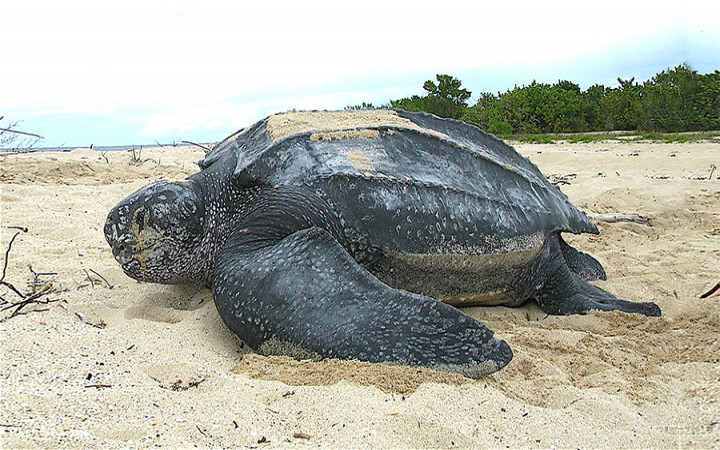Today’s Wonder of the Day was inspired by Carrie. Carrie Wonders, “I am wondering about sea turtles.” Thanks for WONDERing with us, Carrie!
We were walking along the Wonderopolis beach the other day when we heard a little voice yell, "Let's make a run for it, gang!" We looked around and realized it was said by a baby turtle in the sand. Suddenly, dozens of baby turtles came scrambling down the beach and headed quickly towards the water. "We made it!" they cheered, as waves carried them off to the sea.
Before we knew it, all the baby turtles were gone from the beach and it made us curious to investigate what kind of turtle we saw.
Known to scientists as Dermochelys coriacea, the leatherback sea turtle is the largest turtle on Earth. The largest leatherbacks can grow to be as much as ten feet (three meters) long and weigh more than 2,000 pounds (907 kilograms). Most leatherbacks grow to be between four and six feet (1.2 and 1.8 meters) long and 650-1,100 pounds (295-499 kilograms).
Leatherbacks get their name from the look and feel of their carapace, which is the upper section of their exoskeleton that covers the back. Unlike other sea turtles that have a hard, bony shell, the dark-colored carapace of the leatherback is made up of a thin but tough layer of flexible skin that feels rubbery.
The leatherback's carapace also looks a bit like leather because of the thousands of tiny bone plates that exist under the surface. Unique ridges along the carapace also give leatherbacks a hydrodynamic structure that allows them to move more easily in the water.
Despite their impressive size, leatherbacks aren't fierce predators. Their delicate jaws only allow them to survive on a diet of soft-bodied animals. That's why most leatherbacks eat only jellyfish.
Leatherbacks can be found in oceans all over the world. They're more widely distributed than any other turtle. They can be found as far north as Alaska and as far south as the coast of South Africa. With their powerful front flippers, they can swim thousands of miles across open seas.
Unfortunately, leatherback numbers have been dwindling in recent years. In most areas, they're listed as a vulnerable species. In the United States, they're listed as an endangered species. Scientists point to marine pollution as a major threat to leatherbacks. In particular, plastic bags can often be mistaken for jellyfish and harm leatherbacks when they eat them.





